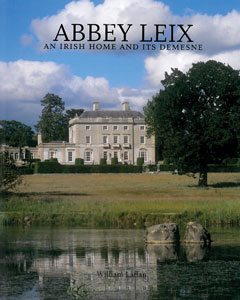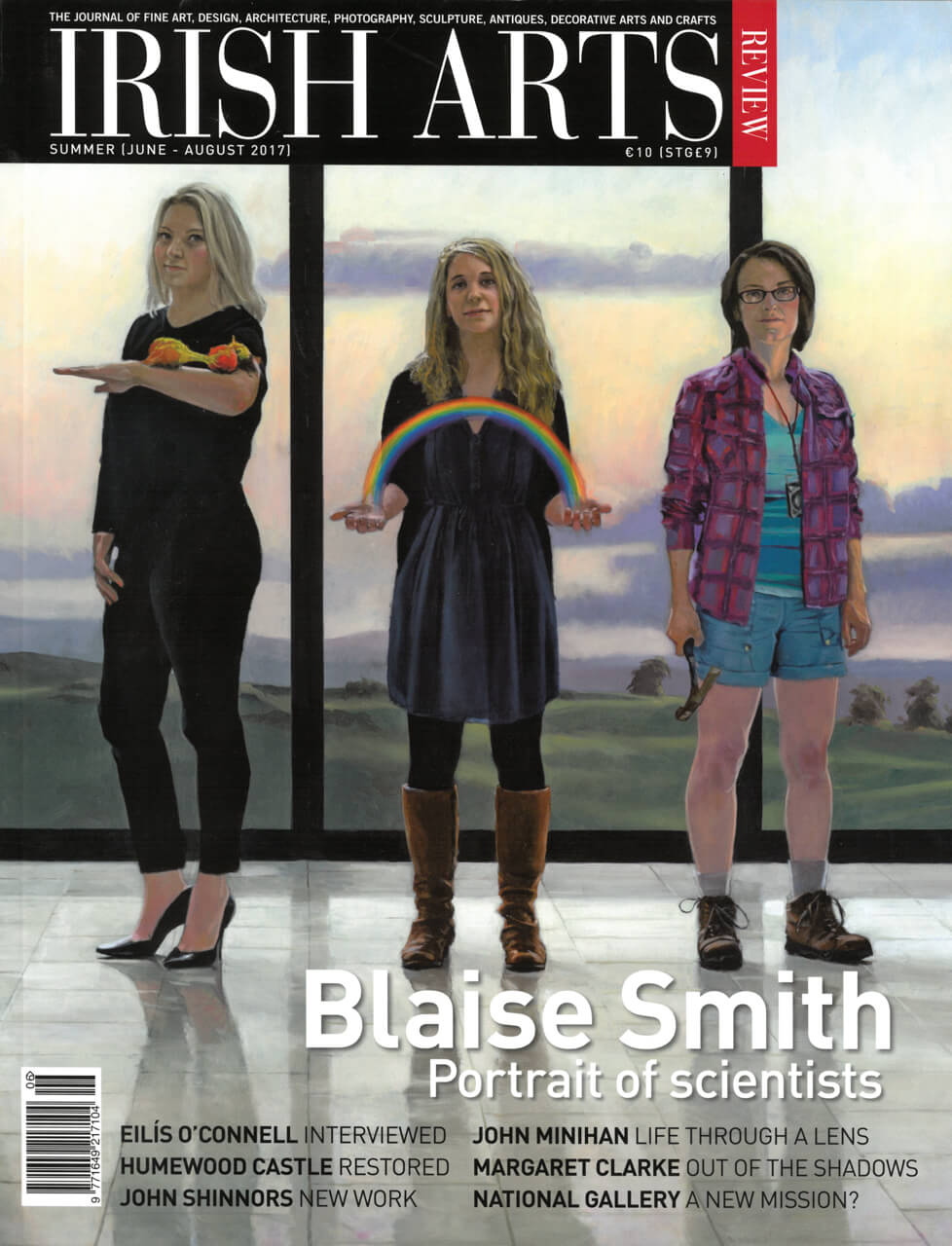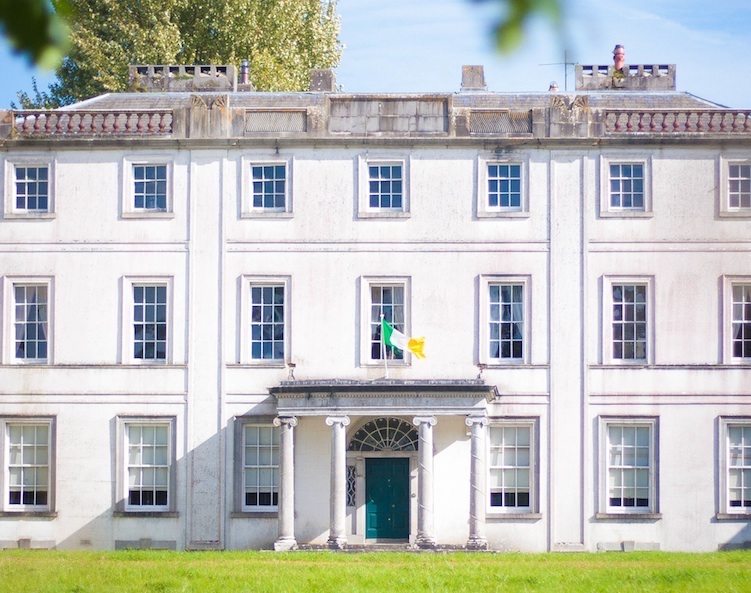
 William Laffan Churchill House Press 2017 pp 297 fully illustrated h/b €45.00 ISBN 978 0955024689 David Hicks The lavishly illustrated Abbey Leix, An Irish Home and its Demesne is a weighty tome that charts the history and development of Abbey Leix, the country house and its surrounding landscape in Co Laois. It follows in the tradition of the publishers, Churchill House Press, in producing books full of sumptuous photography embellished with lengthy evocative chapters on the subject of the Irish country house. As I peruse my bookshelves, I see a number of their previous titles, such as Ballyfin: the Restoration of an Irish House and Demesne, another Laois country house, and Wallpaper in Ireland 1700-1900, by David Skinner. The author William Laffan was involved in a recent masterpiece, a book on Russborough in Co Wicklow, and has also produced many books on the subject of the Irish country house and their contents. This book is wonderfully illustrated with remarkable photography (by James Fennell, Kevin Hutchinson, Dara McGrath and John Quinn) depicting the house sitting within scenic vistas, hundreds of years in the making. The full-page image of the ‘Cotton’ map, which depicts the counties of Laois and Offaly in 1565, deserves ten minutes of anyone’s time to explore its wonderful detail. I enjoyed the section of the book that deals with the architectural origins of the house, in particular the reproductions of the early drawings. While this book will answer a lot of questions relating to the Abbey Leix Estate, I’m afraid it left me with many more unanswered. A century-long litigation, which ended in 1769 confirming the Vesey’s title to Abbey Leix, is mentioned twice but never elaborated on. Further exploration of the family finances over the years would have given greater insight into the development of the house. Why for instance was the great extension to Abbey Leix, proposed in the 19th century, not built to the grandiose plans illustrated in the book? Also we read about the 5th Viscount de Vesci, whom we are told was unhappily married to his first wife but we are never informed of the reasons for this unhappy union. In terms of social history, this is a rich seam that is ignored, the breakdown of a marriage at this social level would have been a scandal at the time similar to the Marquis of Headfort when he married an actress in 1901 and made front page news. However the divorce is never mentioned nor are the effects that the termination of this marriage had on the Laois estate.
William Laffan Churchill House Press 2017 pp 297 fully illustrated h/b €45.00 ISBN 978 0955024689 David Hicks The lavishly illustrated Abbey Leix, An Irish Home and its Demesne is a weighty tome that charts the history and development of Abbey Leix, the country house and its surrounding landscape in Co Laois. It follows in the tradition of the publishers, Churchill House Press, in producing books full of sumptuous photography embellished with lengthy evocative chapters on the subject of the Irish country house. As I peruse my bookshelves, I see a number of their previous titles, such as Ballyfin: the Restoration of an Irish House and Demesne, another Laois country house, and Wallpaper in Ireland 1700-1900, by David Skinner. The author William Laffan was involved in a recent masterpiece, a book on Russborough in Co Wicklow, and has also produced many books on the subject of the Irish country house and their contents. This book is wonderfully illustrated with remarkable photography (by James Fennell, Kevin Hutchinson, Dara McGrath and John Quinn) depicting the house sitting within scenic vistas, hundreds of years in the making. The full-page image of the ‘Cotton’ map, which depicts the counties of Laois and Offaly in 1565, deserves ten minutes of anyone’s time to explore its wonderful detail. I enjoyed the section of the book that deals with the architectural origins of the house, in particular the reproductions of the early drawings. While this book will answer a lot of questions relating to the Abbey Leix Estate, I’m afraid it left me with many more unanswered. A century-long litigation, which ended in 1769 confirming the Vesey’s title to Abbey Leix, is mentioned twice but never elaborated on. Further exploration of the family finances over the years would have given greater insight into the development of the house. Why for instance was the great extension to Abbey Leix, proposed in the 19th century, not built to the grandiose plans illustrated in the book? Also we read about the 5th Viscount de Vesci, whom we are told was unhappily married to his first wife but we are never informed of the reasons for this unhappy union. In terms of social history, this is a rich seam that is ignored, the breakdown of a marriage at this social level would have been a scandal at the time similar to the Marquis of Headfort when he married an actress in 1901 and made front page news. However the divorce is never mentioned nor are the effects that the termination of this marriage had on the Laois estate.
Further exploration of the family finances over the years would have given greater insight into the development of the house
While the overall presentation is impressive, there are areas where further consideration may have been prudent. In the section of the book that deals with the restoration of the house, we are treated to a number of interesting photographs of the various stages of this intensive process. Some of these images could have been enlarged and would also have benefited from better captions. In one series of photographs we see a decorative plaster ceiling being propped with timber, but there is no explanation as to what the particular challenge being faced in the images actually was. The end papers of the book feature a charming map of the estate which draws the reader’s attention to the numerous ancillary supporting buildings that make up the demesne. We read about these buildings such as the ‘handsome’ gate lodge, Lace Cottage, the Stable Block and the Home Farm but we never see a photograph of them. The book does not capitalise on the ‘Downton Abbey’ effect, we are not treated to images of the areas of the house that would have once housed the servants or how these spaces were adapted for reuse. Sometimes with this publication, to quote an old saying, the reader ‘cannot see the wood for the trees’. In fact nearly fifty of its 280 pages have been devoted to trees in the demesne, which not only includes photographs of the various specimens but also the individuals who planted them. While this element is interesting, it is too long and does not match the calibre of the book in the preceding chapters, diluting the quality of the overall publication. My main criticism lies with what has been omitted; perhaps we are spoilt with so much information being provided that it leaves us wanting more. David Hicks is the author of Irish Country Houses: A Chronicle of Change (2012).



